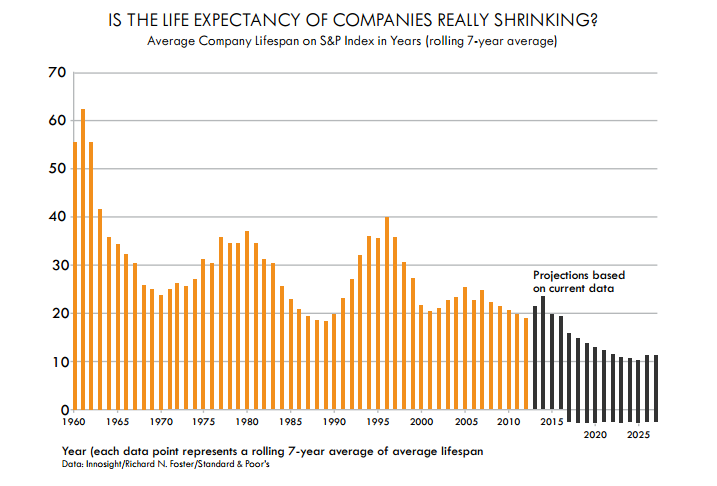5 Key Guidelines Businesses Are Using to Keep Up with Digital Transformation
5 Key Guidelines Businesses Are Using to Keep Up with Digital Transformation
The acceleration of innovation is driving the need for digital transformation. Forrester predicts that by the end of 2017, transformation budgets will have increased enormously as businesses of all sizes try to capitalize on new opportunities, as well as avoid disruption by their more agile competitors. Major disruption from new technology (such as the office computer) used to take years or even decades to truly change business models. Today, a new idea pared with the right technology and approach can disrupt markets in mere months.
Due to the acceleration of innovation, projections show that the average tenure of S&P 500 companies will shrink from 61 years in 1958 to just 14 years by 2026. The new pace of innovation has created a number of reasons why organizations are eager to undergo digital transformation, but by far the most likely reason is they don’t have any other choice – it’s survival.

In our new whitepaper, Transforming Business for the Digital Age: The Mid-Market Guide to Digital Transformation, we explore five key guidelines business leaders are employing to stay ahead of their competitors in a rapidly changing digital age.
- Strategic Planning: Build a digital transformation framework to help align business objectives with the right approach and technologies.
- Technology: Drop outdated processes and legacy systems that are preventing your business from harnessing the digital technologies required to grow.
- People: Business leaders must foster a culture that is ready and willing to embrace change. Technology may be what drives digital transformation, but it’s the people that make it a success.
- Leadership: Successful mid-market companies share several similar traits. Ensuring that the Chief Technology Officers have a seat at the leadership table is one of them.
- Progress: To remain competitive, you must be willing to move beyond your comfort zone. And once you’re there, you can’t become complacent and slip into a new comfort zone. Progress is now and always.
The guide also reveals insight into what technologies companies are exploring to counter the threat of disruption and to become a more dynamic player. Looking at which technology trends will be most prominent over the next three years, Analytics/Big Data, Cloud Computing, and the Internet of Things (IoT) lead the way.

SHARE